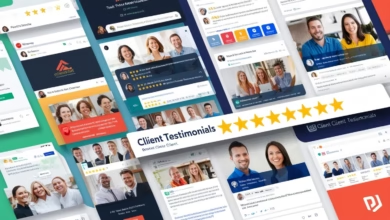Introduction
In the era of remote work, becoming a virtual assistant (VA) is one of the most accessible and in-demand career options. As more businesses and entrepreneurs shift their operations online, the need for skilled remote support has exploded. Virtual assistants handle a wide variety of tasks, ranging from managing emails and schedules to customer service and social media.
Whether you’re looking for a side hustle or a full-time career, being a VA offers flexibility, independence, and the potential for great income—especially if you build a niche. In this guide, we’ll explore the skills needed, tools to master, ways to find clients, and how to scale your career as a virtual assistant in 2025.

What Does a Virtual Assistant Do?
A virtual assistant performs tasks that support the operations of a business or entrepreneur, remotely. Their responsibilities can be general or specialized depending on the client’s needs.
Common Tasks Include:
- Managing emails and calendars
- Booking appointments or travel
- Data entry and report generation
- Customer support
- Social media management
- Research tasks
- Invoicing and CRM updates
The Top Skills Every Virtual Assistant Needs
Not all virtual assistants offer the same services, but the most successful ones share a common set of foundational skills:
1. Excellent Communication Skills
Being able to communicate clearly and professionally is essential—both via email and video calls.
2. Time Management
VAs often juggle multiple clients or tasks. Using time tracking tools and staying organized is key.
3. Tech Proficiency
You don’t need to be a coder, but familiarity with productivity and communication tools is critical.
Tools to master:
- Google Workspace (Docs, Sheets, Gmail)
- Trello / Asana
- Slack
- Zoom
- Notion
- Canva (for social media tasks)
4. Problem-Solving Abilities
Clients value assistants who can find solutions independently and think critically when challenges arise.
5. Adaptability
Clients and industries vary. You must be ready to adapt to new systems, tools, or expectations.

How to Find Your Niche as a VA
Generalist VAs are great, but if you want to stand out and charge higher rates, finding a niche is essential.
Popular Niches in 2025:
- E-commerce VA: Product listings, inventory updates, customer service for Shopify or Amazon stores.
- Real Estate VA: Booking showings, handling leads, creating listings.
- Social Media VA: Content scheduling, analytics, engagement.
- Tech/Startup VA: CRM updates, scheduling demos, client follow-ups.
- Content Creator VA: Podcast editing, video uploading, affiliate management.
Identifying your strengths and passions will help you find a niche where you can offer the most value.
Where to Find Virtual Assistant Jobs
There are multiple platforms and strategies to land your first (or next) VA client:
Top Platforms to Start With:
- Upwork – Ideal for building your portfolio with short gigs.
- Fiverr – Great for packaging specific VA services.
- Freelancer.com – Mix of long- and short-term projects.
- PeoplePerHour – Especially popular in Europe.
- LinkedIn Jobs – Use keywords like “remote virtual assistant”.
- Remote OK, We Work Remotely, AngelList – For startup-related gigs.
Pro Tip:
Join Facebook groups and online communities related to your niche. Many entrepreneurs prefer hiring directly from groups they trust.

Setting Your Rates and Building Packages
One of the most challenging parts for beginners is knowing what to charge. Rates depend on your experience, the services offered, and your niche.
Common Pricing Models:
- Hourly Rates: Great for short-term or ongoing support (start at $10–$25/hour as a beginner).
- Project-Based: Set pricing for defined outcomes (e.g., $50 for managing one Instagram account per week).
- Retainers: Monthly packages for a set number of hours or services.
How to Stand Out:
- Offer an onboarding guide or welcome package
- Build a strong portfolio (even mock projects count!)
- Include testimonials or reviews
- Share before-and-after case studies if you offer social media or website support
Creating Your VA Portfolio Website
Having a simple website (even a one-pager) boosts your credibility and makes it easier to convert leads.
What to Include:
- Introduction & Bio
- Services Offered
- Packages or Pricing Guide
- Testimonials
- Contact Form or Booking Link
You can build it easily with:
- WordPress
- Carrd.co
- Notion (public pages)
- Wix or Squarespace
Conclusion
Becoming a virtual assistant in 2025 is one of the smartest ways to break into the remote work world. The demand for VAs continues to rise across industries, and with the right combination of skills, tools, and persistence, you can create a sustainable, profitable online career.
Whether you’re starting from scratch or already have experience, the opportunities in the VA space are endless—and now is the perfect time to get started.






